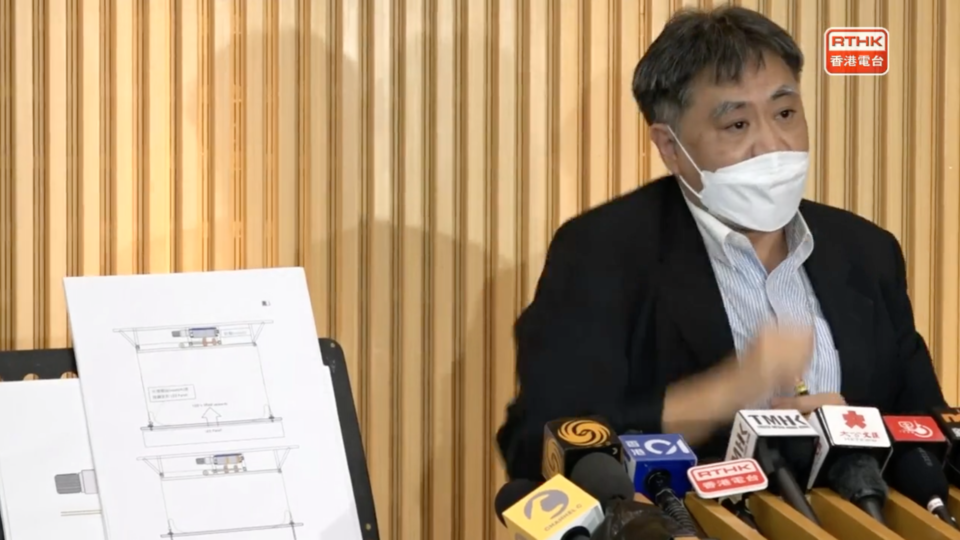The use of poor quality cables and an error in the reported weight of the LED screen that dropped onto the middle of the stage during boy band Mirror’s concert are among the possible causes for the horrifying accident that injured two dancers, a government task force revealed on Wednesday.
Last month’s infamous accident saw the huge video screen, which measured 4 meters by 4 meters, fall onto the stage in the Hong Kong Coliseum during one of the group’s performances. Mo Li, who is the more severely injured of the two dancers, is reportedly paralyzed from the neck down. Health authorities and his father recently said he is still in critical condition, but his vital signs are stable and he is able to communicate.
Speaking to reporters on Wednesday after a meeting of the task force, Lee Tsz-chun, an assistant director at the Leisure and Cultural Services Department who is leading the task force, said that one of the two cables that held the screen snapped. The other cable did not snap, but the eye bolt attaching the cable to the screen broke.
Experts also gave more details on why there was metal fatigue in the cables, which was reported earlier.
Material testing expert Eric Lim said the task force did some tests on the cables used to hold up the screen to determine how much force they could endure.
He said that the cables used in the concert could withstand 20 percent less force than those of the same type found in the market.
Lim added that they found that the cables used in the concert were damaged at some points where they should not have had to endure stress.
“We don’t know why they were damaged. The cables were damaged when they were put up there, or before they were put up there. This sped up the metal fatigue,” he said.
Lim said there were also issues with how the cables were installed.
Because of how they were used, they were held in place by a winch and a rope guard.
He said the rope guard should not press on the cables and should be able to move.
However, during the investigation, Lim said the task force found that the rope guard was pressing on the cables and could not move easily, leading to abrasion of the cables.
Lim also said there was a very big difference between the weight of the screen provided by the organizers and its actual weight.
This meant that the cables had to support a much larger weight than what was estimated, he added.
“Putting all these problems together resulted in the cables having metal fatigue in a short period of time,” he said.
Lee stressed that the investigation by the task force is not yet complete as further tests and experiments are still needed. He added the task force aimed to finish the probe by next month.
Lee also said it was not fair for him to put the blame on anyone at this stage as investigations by both the task force and other government departments are still ongoing.
“The police and Labour Department are conducting investigations. I don’t think we should give any comment on who should be responsible for the incident,” said Lee.




